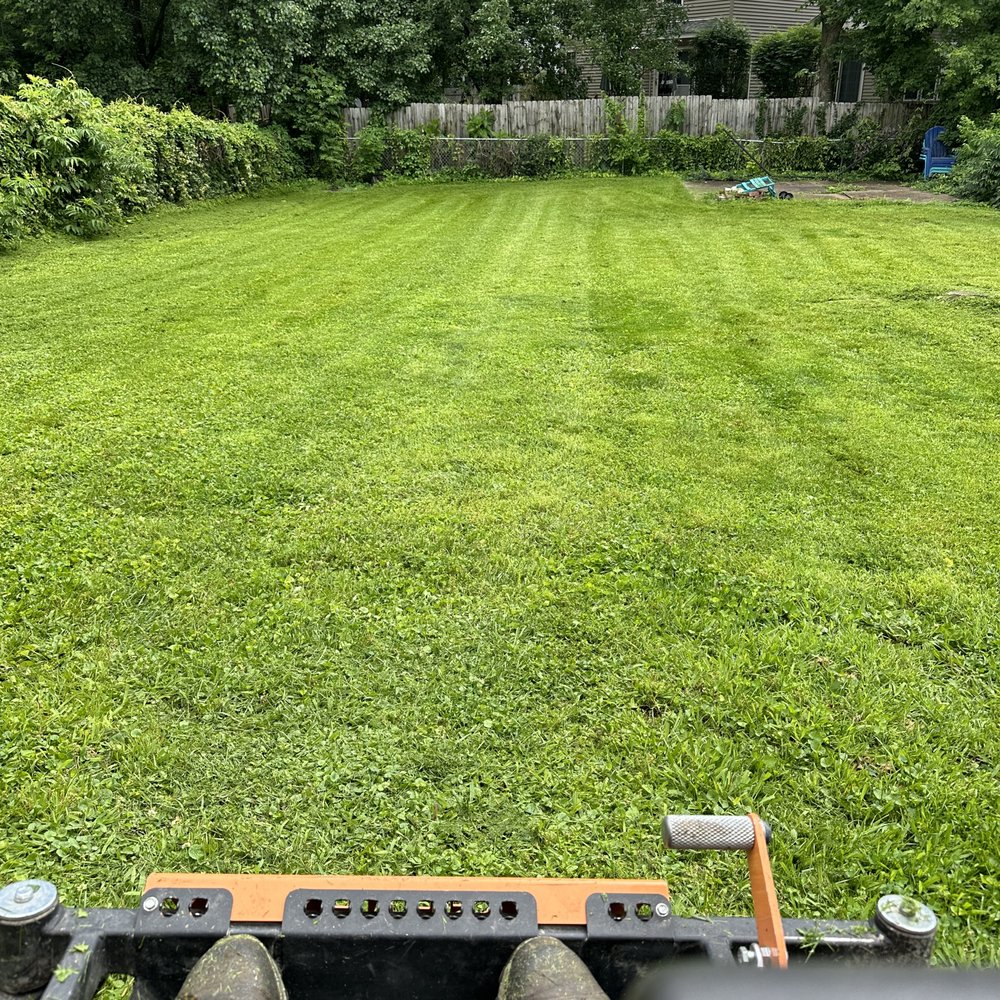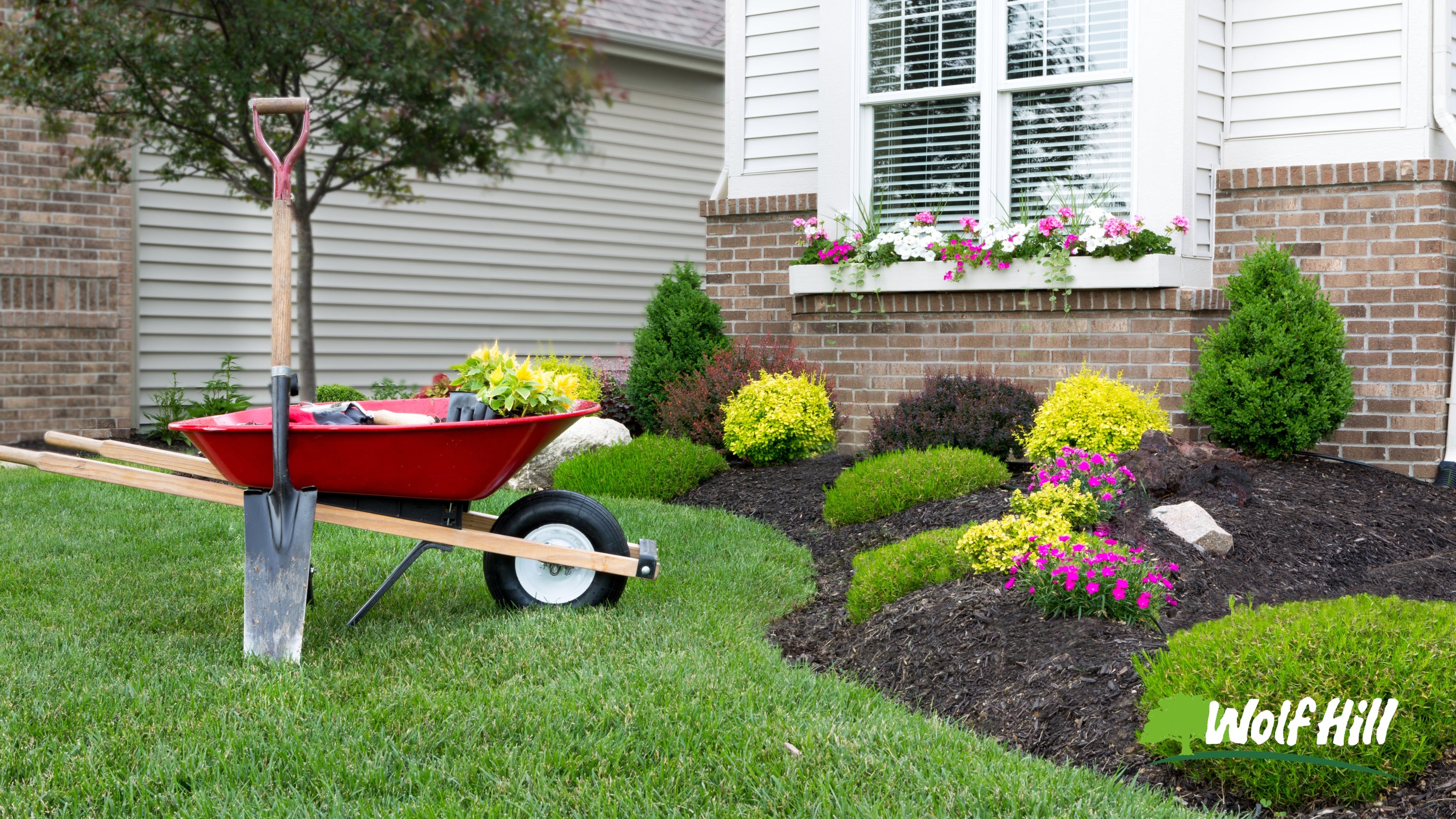Choosing the Right Supplies for a Long-Lasting BBQ Island Installation
Checking Out Different Types of Landscaping to Boost Your Outdoor Environment
Landscape design plays a crucial role in specifying exterior rooms. Different styles, from traditional yards to modern-day minimal styles, offer distinctive benefits for enhancing aesthetic appeals and feature. Including elements like xeriscaping and native plants can add to ecological equilibrium. Comprehending the interaction of hardscape and softscape is vital for creating inviting atmospheres. The options readily available can be frustrating, prompting one to review which design best straightens with their vision for an outdoor refuge.
Conventional Yard Landscape Design

While several modern yards embrace minimalism and indigenous plantings, typical garden landscape design remains a valued approach that emphasizes proportion, framework, and ornamental attributes. This style commonly integrates formal geometric designs, where hedges, flowerbeds, and pathways are prepared with precision. Central prime focus, such as water fountains or sculptures, draw the eye and give a sense of harmony.Traditional landscape design frequently includes a range of plant kinds, showcasing seasonal blooms and evergreen components. Traditional bushes, perennials, and annuals develop vibrant shades and appearances throughout the year. Furthermore, pergolas, arches, and trellises include upright rate of interest and work as assistance for climbing plants, boosting the overall aesthetic.The usage of natural products, such as stone and timber, additional enhances the typical landscape, adding to a timeless quality. Ultimately, this style invites relaxation and satisfaction, making it a beloved choice for those looking for an attractive outdoor atmosphere.
Modern Minimalist Landscape Design
Modern minimalist landscaping highlights simplicity and functionality, characterized by open areas and clean lines. Key attributes include a minimal plant scheme and thoughtful hardscape design that prioritizes functionality and aesthetic allure. Effective plant selection techniques additionally enhance the minimal technique, developing tranquil outside settings that encourage relaxation and reflection.
Trick Attributes of Minimalism
An expanding fad in landscape design is the accept of minimalism, characterized by simpleness and capability. Minimalist landscaping focuses on tidy lines, open rooms, and a minimal shade combination, promoting a feeling of harmony. Aspects are meticulously curated to avoid mess, allowing each element to stand apart. The use of all-natural materials, such as stone and wood, enhances the organic feeling while preserving a visual balance. Furthermore, minimalist layouts commonly include geometric forms, which can develop aesthetic interest without frustrating the senses. Water features may be included, functioning as prime focus that enhance peacefulness. In general, minimalism in landscaping stresses the beauty of restriction, permitting nature's intrinsic high qualities to radiate through in a harmonious outdoor atmosphere.
Plant Selection Approaches
Reliable plant selection is essential for accomplishing the desired aesthetic in modern minimalist landscaping. The emphasis should be on simpleness, using a restricted combination of plants that enhance each various other and the surrounding environment. Native plants are usually suitable, as they require less maintenance and water, promoting sustainability. Choosing species with differing elevations and appearances can add aesthetic rate of interest without frustrating the room. Grouping plants in clusters instead of spreading them enhances communication and reinforces the minimalist theme. Evergreen selections can offer year-round framework, while seasonal flowers present refined shade modifications. Eventually, the goal is to create a peaceful outside space that personifies serenity and consistency with thoughtful plant selections.
Hardscape Layout Principles
Necessary aspects in hardscape design substantially add to the total visual appeals and performance of minimalist landscape design. This layout method highlights clean lines and downplayed products, creating a clean aesthetic experience. Secret elements include paths, patio areas, and keeping wall surfaces, which not just specify rooms but also enhance ease of access and functionality. Using materials such as concrete, stone, and wood prevails, mirroring a natural yet modern-day visual. Integrating geometric forms and balanced layouts additionally reinforces the minimal ideology, allowing for an unified mix with bordering plant. Additionally, proper drainage and disintegration control are necessary considerations, making sure durability and sustainability. Ultimately, reliable hardscape layout functions as a foundation that matches softscape aspects while maintaining balance and simplicity in outside settings.
Cottage-Style Landscaping
Cottage-style landscape design supplies a wonderful strategy to developing inviting outside spaces. By including charming plant combinations, this style promotes a feeling of heat and whimsy. The emphasis on comfortable, well-defined locations motivates relaxation and satisfaction of nature.
Enchanting Plant Mixes
Although numerous home owners seek to develop a stunning outdoor space, accomplishing the charm of cottage-style landscaping commonly hinges on thoughtful plant combinations. Vivid flowers, rich foliage, and aromatic natural herbs can be skillfully combined to stimulate a feeling of whimsy and nostalgia. Integrating lavender, daisies, and foxgloves develops a colorful tapestry that draws in pollinators while offering a fascinating fragrance. Incorporating decorative lawns like miscanthus can add texture and activity, enhancing the softer blossoms. In addition, mixing annual and perennial plants assurances constant shade throughout the seasons. Using climbers, such as clematis or honeysuckle, can improve upright passion. Overall, these combinations not just beautify the landscape however also foster a inviting and bewitching environment.

Relaxing Outside Areas
Producing cozy outside spaces requires a careful blend of comfort and beauty, enhancing the dynamic plant mixes discovered in cottage-style landscaping - Landscape Lighting Installer. These areas typically include welcoming seating setups, such as weathered wooden benches or cushioned chairs surrounded by rich greenery. Soft illumination, like fairy lights or lights, includes warmth, transforming the room into a serene hideaway. Including aspects such as trellises adorned with climbing roses or aromatic herbs boosts sensory experiences. Additionally, paths made from rustic stones welcome exploration and link with nature. Decorative touches like birdbaths or wayward garden art add to a feeling of whimsy. Eventually, the goal is to create a charming environment that urges leisure and satisfaction of the these details elegance surrounding these comfortable exterior sanctuaries
Xeriscaping for Water Conservation
Just how can communities balance visual landscaping with the pushing need for water preservation? Xeriscaping emerges as a viable service, advertising sustainable methods that decrease water use while enhancing outside beauty. This landscaping technique concentrates on using drought-resistant plants native to the region, which require considerably much less water than traditional gardens. By including mulch and efficient watering systems, xeriscaping minimizes evaporation and runoff, more conserving priceless water resources.Communities can produce visually attractive landscapes via mindful planning, choosing a diverse variety of appearances and colors that flourish in you can try these out dry problems. In addition, xeriscaping urges the use of decorative rocks and attractive gravel, offering practical and eye-catching options to lawn lawns. As areas embrace this green approach, they not just reduce their water consumption but also promote biodiversity and durability in their regional environments. Eventually, xeriscaping works as a demonstration of the consistency in between visual charm and ecological duty.
Hardscape Style Elements
Hardscape style aspects play a crucial function in boosting outside areas by offering framework and functionality. These non-plant attributes, such as patios, decks, wall surfaces, and sidewalks, produce aesthetic passion while offering useful purposes. Utilizing products like stone, brick, and concrete, hardscaping adds to the general aesthetic allure and toughness of a landscape.Incorporating hardscape aspects can specify areas within a backyard, assisting movement and encouraging social communication. A well-placed path can attach different areas of the yard, while keeping walls can manage elevation modifications and prevent erosion.Furthermore, hardscape layout can improve availability and security, giving steady surface areas for strolling or lounging. Effective combination of hardscape parts complements soft landscape design, making certain a well balanced exterior setting. Ultimately, thoughtful hardscape style enhances not just the elegance of outdoor areas yet also their usability, making them more welcoming and useful for site visitors and house owners alike.
Outdoor Living Rooms
While outside home supply a smooth mix of convenience and nature, they serve as necessary extensions of a home, improving way of living and recreation. These areas can include outdoor patios, decks, or outside kitchen areas, designed to foster relaxation and home entertainment. Outdoor Lighting Installer. By incorporating functional furniture and trendy decoration, homeowners develop welcoming ambiences for celebrations or peaceful evenings.The combination of shade structures, such as Get More Info awnings or pergolas, secures versus the components while keeping an open feeling. Fire pits and outside heating systems prolong use into cooler months, offering warmth and ambiance. Additionally, incorporating lights functions improves the area's usability after sunset, developing a wonderful night atmosphere.Landscaping components, such as boundaries and paths, further specify these locations, assisting movement and including visual appeal. Ultimately, exterior home transform backyards right into versatile resorts, advertising a way of living that accepts both nature and comfort
Indigenous Plant Landscaping
Indigenous plant landscaping stresses the use of aboriginal vegetation to develop harmonious and lasting outdoor atmospheres. This method not just enhances biodiversity but additionally conserves water and lowers the demand for chemical plant foods and chemicals. By picking plants that are belonging to a particular area, property owners can assure that their landscapes are well-adapted to local soil and climate conditions, leading to lower maintenance requirements.Additionally, native plants offer essential environments for neighborhood wild animals, consisting of birds, bees, and butterflies, promoting environmental wellness. Landscape develops that integrate these plants commonly feature naturalistic formats that resemble regional ecological communities, fostering a sense of area and connection to the environment.Furthermore, native plant landscaping can add to soil security and disintegration control, making it an eco accountable choice. Overall, this method not just improves exterior rooms however also supports the neighborhood environment, producing a lasting equilibrium in between human activity and nature.

Frequently Asked Concerns
Just How Can I Select the Right Landscaping Design for My Home?
Selecting the right landscaping design for a home entails assessing the residential property's architecture, climate, and individual preferences. Retaining Wall Installation. Investigating various designs and speaking with professionals can provide advice to produce a harmonious outdoor space customized to private needs
What Is the Typical Expense of Professional Landscape Design Providers?
The average expense of professional landscaping services commonly ranges from $1,000 to $5,000, depending upon task intricacy, area, and dimension. Homeowners ought to consider acquiring several quotes to assure they receive reasonable rates and high quality service.
Just how Often Should I Maintain My Landscaped Lawn?
The regularity of keeping a designed lawn typically depends on the plants and features present. Normally, regular maintenance every few weeks is recommended, with seasonal jobs boosting in regularity throughout optimal expanding seasons for perfect health and aesthetic appeals.
Are There Landscaping Alternatives for Tiny Urban Spaces?

Numerous landscape design choices exist for small metropolitan spaces, including vertical yards, container plants, and roof yards. Including these components can make best use of restricted areas while giving plant, enhancing appearances, and enhancing air high quality in city settings.
What Plants Are Finest for Attracting Regional Wildlife?
The most effective plants for attracting local wildlife include native flowering types, berry-producing hedges, and varied lawns. These plants supply vital food and habitat, cultivating a prospering ecological community that sustains various birds, bugs, and tiny creatures. Lots of property owners look for to create a picturesque outside room, achieving the appeal of cottage-style landscaping frequently pivots on thoughtful plant mixes. Developing comfortable outside rooms calls for a careful mix of comfort and appeal, enhancing the vivid plant combinations located in cottage-style landscape design. Indigenous plant landscape design emphasizes the use of indigenous flora to create harmonious and sustainable outdoor settings. Landscape makes that include these plants often feature naturalistic formats that imitate neighborhood ecosystems, fostering a sense of location and connection to the environment.Furthermore, indigenous plant landscape design can add to dirt stability and disintegration control, making it an eco accountable choice. Numerous landscape design choices exist for little metropolitan areas, consisting of vertical gardens, container plants, and roof gardens.